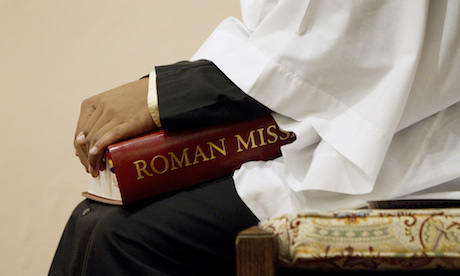The Bishop of Palmerston North Charles Drennan says the clunky sentence construction and often awkward vocabulary in the six-year-old translation of the Mass have tested us all, “Notwithstanding the introduction of some evocative language.”
Writing in Welcom, Drennan made a plea for patience in regard to what action may be taken in New Zealand as a consequence of Pope Francis’ recent Motu Proprio (personal edict).
In this document, the Pope shifted the responsibility of liturgical translations from Rome back to national Conferences of Bishops.
‘What I can say is what we all know: a better translation of the Mass is possible.”
“I can also say that our New Zealand Bishops Conference more than any other in the English-speaking world has laid before Rome and the Holy Father himself the frustrations experienced with the current translation, the causes of which Pope Francis has now addressed.
Drennan said that three main factors have given rise to the present situation:
- The decision of Cardinal Medina Estevez (Prefect of the Congregation for Divine Worship and the Discipline of the Sacraments, 1998-2002) to wrest control of translations by distancing the International Commission on English in the Liturgy ‒ which was a group of Bishops and language experts set up by a number of Bishops Conferences (New Zealand included) ‒ to provide translations;
- The publication by Medina’s Vatican department in 2001 of Liturgiam Authenticam, which outlined that translations were to be tightly shackled – word by word – to the ‘original’ Latin;
- The emergence of a group called Vox Clara whose role was to vet the International Commission.
“These three linked events have now been quietly placed on the sidelines of history and influence.,” Drennan said.
Drennan said he did not see the motu proprio as a “progressive versus conservative” tussle.
“Pope Benedict’s love for liturgy saw him underline the duty to preserve a sense of the transcendent and reverence.”
“Pope Francis’s love for liturgy sees him underline [the fact] that liturgy must be comprehensible and should be understood in the context of evangelisation, which draws people in as participants, not observers, of the liturgy.”
“Both are right.”
Read the full article in Welcom
Image: America Magazine
